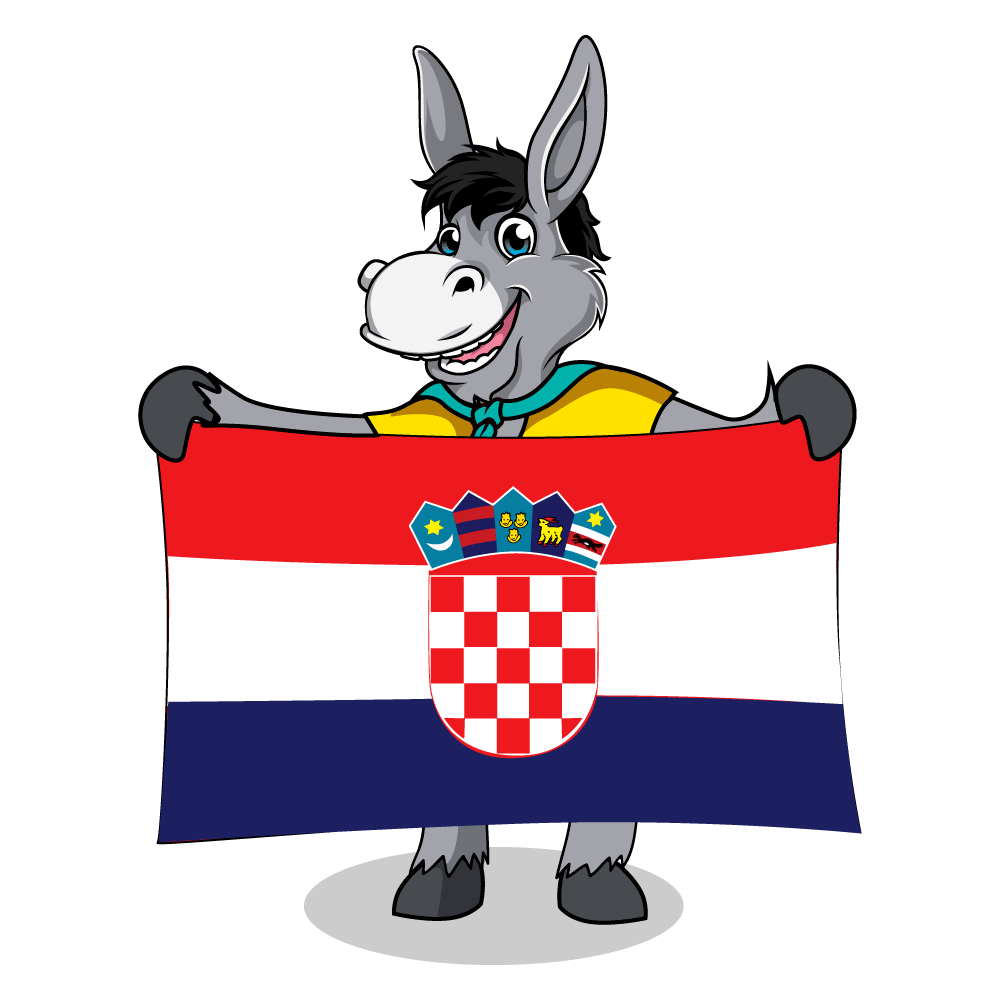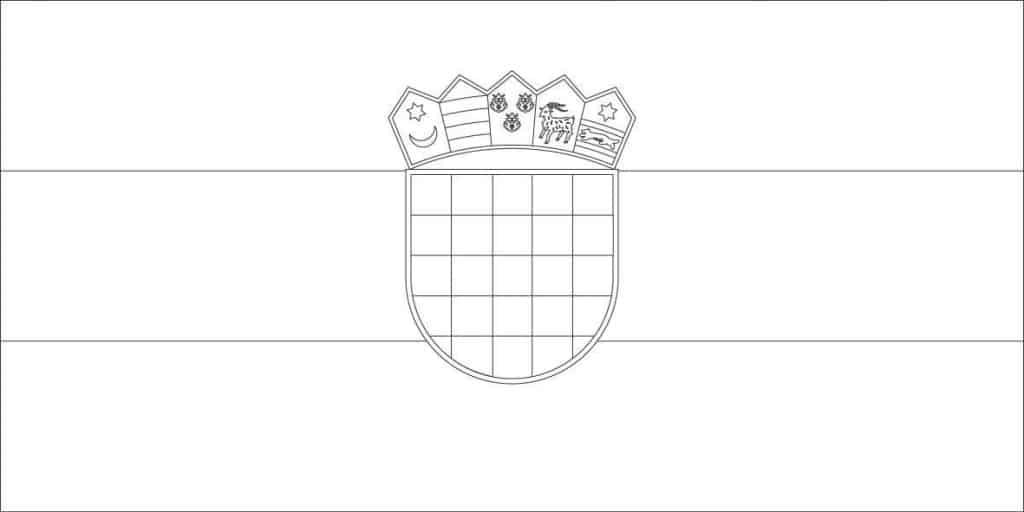The coat of arms on the Croatian flag of the Republic of Croatia consists of one central shield and five smaller shields that form a crown over the central shield. It was adopted in its current form on 21 December 1990.

The main coat of arms is a checkerboard of 13 red and 12 white squares sitting over a blue, red, and white band. The coat of arms is informally known in Croatian as šahovnica.
The five smaller shields represent five different historical regions within Croatia.
Skip Ahead To My Advice Here!
The Five Regions On The Croatian Flag
 Dubrovnik region – Coat of arms of Dubrovnik. The original coat of arms is the old coat of arms of Árpád dynasty, granted to the Dubrovnik Republic by King Louis I in 1358. Dubrovnik region – Coat of arms of Dubrovnik. The original coat of arms is the old coat of arms of Árpád dynasty, granted to the Dubrovnik Republic by King Louis I in 1358. |
|
 Istria – Coat of arms of Istria. The goat as a symbol of Istria is claimed to be associated with Istria since ancient times. However, the origins of this coat of arms are unclear, and until the 19th century, there was no official symbol of Istria. It was in 1861 when March of Istria became the Crown land in the Austrian Empire that this coat of arms became official.
|
 Dalmatia – Coat of arms of Dalmatia. Historically, this coat of arms was in use since at least 1the 4th century. First, officially recorded use goes back to King Louis I and his daughter Queen Mary who both used an earlier version of the arms as part of their personal coat of arms. Until 1526 this coat of arms was also used to represent the whole of Croatia. Dalmatia – Coat of arms of Dalmatia. Historically, this coat of arms was in use since at least 1the 4th century. First, officially recorded use goes back to King Louis I and his daughter Queen Mary who both used an earlier version of the arms as part of their personal coat of arms. Until 1526 this coat of arms was also used to represent the whole of Croatia. |
 Slavonia – Coat of arms of Slavonia. This coat of arms was derived from an earlier version found on Slavonian Banovac coins minted between 1235 and 1384. King Vladislaus II Jagiellon officially granted the coat of arms on December 8, 1496. Slavonia – Coat of arms of Slavonia. This coat of arms was derived from an earlier version found on Slavonian Banovac coins minted between 1235 and 1384. King Vladislaus II Jagiellon officially granted the coat of arms on December 8, 1496. |
Photo Credits – Wikipedia (where you can also find out further details) |
Brands We Use And Trust
Move This Adventure To Your Inbox & Get An Instant Freebie

No spam. Unsubscribe at any time.
Have Fun! Croatian Flag Colouring-In Sheet




Do you know why the colours red, white and blue were chosen?
No! Good questions, I’ll be sure to ask my relatives when I am back in Croatia this week. Hmm….
A lot will say that red, white and blue are probabbly standard coulours of Slavic tribes.
But also those were colours of Croatia regions, and united against threats – here we are with The Flag!!
Thank goodness for you Ratko!! Hvala
No, thank you for encouraging people to dare to reply to the great themes of your posts! We’re been challenged!
Excellent!! How appropriate that I am reading this article AS I watch Brazil v Croatia in the first game of the World Cup:).
Too bad we lost that game :(
Actually, it is not certain why exactly those colors were chosen. There were several theories but evidently with lack of evidence that would back up any of those theories – as first, Croatia – Hrvatska, was part of Slavonia (now it is reversed – Slavonia is part of eastern Croatia). Hrvatska (Croatia) of that time had red color as main color (still can be seen as main on national folk costumes /Zagorje, Prigorje, Šestine…) and Slavonia had blue as main color (also can be seen on costumes as well as on county crests and flags. Although was thought that white (in the middle) was considered as color of peace between Hrvatska and Slavonia, evidence of that was never established. What was more confusing, coastal regions were using light yellow color (also described as gold) and that color wasn’t used on flag (not to mention green of Istria).
More common interpretation is that, as many Slav countries, inherited those colors from original one – Russian (their also isn’t original btw), but in changed order to avoid similarities. It is common knowledge that Russia was huge empire and, as such, many smaller Slaven countries looked at them as example.
But there are not enough historical information that would confirm that.
Btw, Russian flag was copied from Netherlands, which had first tricolor flag (9th century).